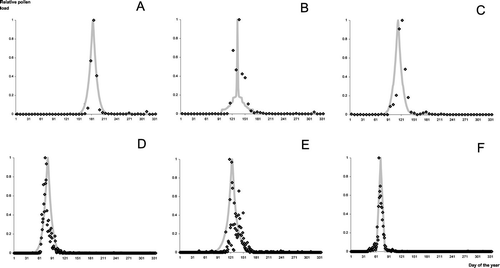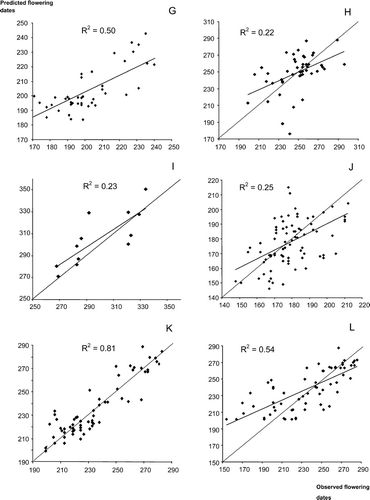Figures & data
The pollen sampler- and geographical data at observation sites.
Variance explained (R2) in the dates of flowering of each taxon in Bellaterra and Girona (Catalonia, Spain) by the Unified Model, and parameter estimates (20 years of observations).
Variance explained (R2) in the dates of flowering in Bellaterra and Girona (Catalonia, Spain) by the simplified models for each taxon.
Variance explained (R2) by the models in each region (R1-R9) and in all regions together (total).
Location of the populations defined for each taxon to run the test of genetic differentiation. One population is defined by the group of locations with the same number. See Appendix for the correspondence between station codes and names, and for geographical coordinates.
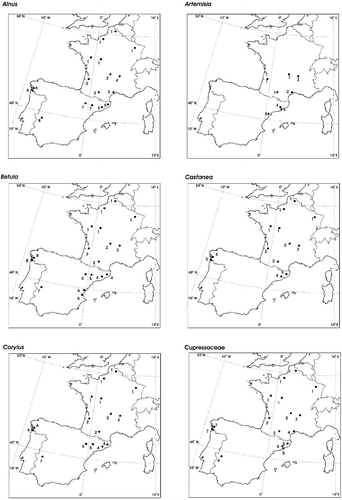
Percentage of differentiation between the phenology of the different populations.
Location of the 29 pollen- and associated meteorological stations used in the study (see for the correspondence between station codes and names, and geographical data).

Results of cross-validation test: predictions in different Spanish locations not included in the model fit using parameter estimates of the closest population. A. Alnus; B. Betula; C. Castanea; D. Corylus; E. Olea; F. Platanus; G. Populus; H. Quercus; I. Tilia; J. Cupressaceae; K. Plantago; L. Poaceae. Dates are in day of the year. The dashed strait line is the bisector (100% matching between predictions and observations).
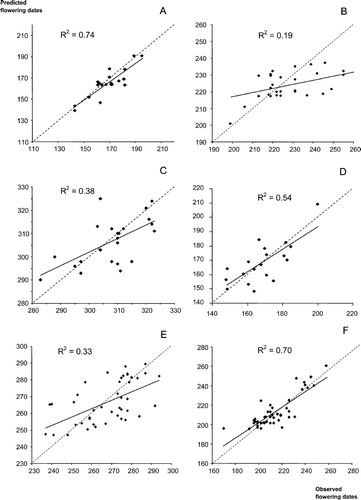
Variations in the dates of peak of pollen load of Artemisia (A) and in the beginning of pollen shedding of Plantago (B) with latitude. Dates are expressed in day of the year (DOY). Diamonds are the French locations and squares are the Spanish locations. Several years per location are plotted to show the among year variation.
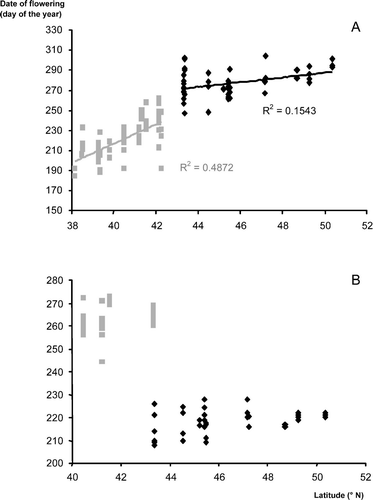
Comparison of predictions of flowering dates (peak of pollen shedding, in day of the year) of Alnus (A), Betula (B), Populus (C) and Platanus (D) in Vienna (Austria) using for each of them parameter estimates from Lyon (France); and of Alnus (E) and Betula (F) in Krakow (Poland) using parameter estimates from northern France, with their respective observed flowering date.
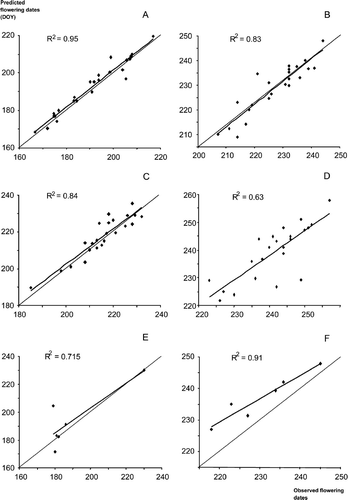
Prediction of the relative pollen load in Lyon (France) in 1982 for Castanea (A), Quercus (B), and Platanus (C), and in Bellaterra (Spain) in 1997 for Platanus (D), Olea (E) and Populus (F). Diamonds are the observed pollen load and grey curves are the predictions obtained with the Corresponding Model for each taxon.
